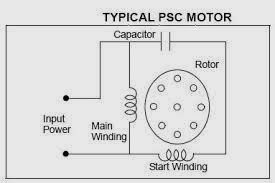The RTD (Resistance
Temperature Detector) , also called resistance thermometer, is a temperature
sensor that exploits the predictable change in electrical resistance of some
materials with changing temperature. Resistance is measured by applying a
constant current and measuring the voltage drop across the resistor.
Ohm’s Law defines the proportionality
between the resistance and the voltage. Therefore the voltage is a direct
measure for the resistance and thereby the temperature. That means, when using
resistors (RTD's) for temperature measurements, the electrical resistance of a
sensor subjected to the temperature is the variable utilized.
By far the most common RTD's used in
industry have a nominal resistance of 100 ohms at 0 °C, and are called Pt-100
sensors.
- Circuit Configurations
In practice three
different circuit configurations are distinguished and described in the
following.
In a two-wire circuit a current is applied to the temperature dependent resistor RT from a constant current source. The voltage drop across RT is measured by the temperature transmitter and converted. The resultant value, however, is incorrect because of the series resistances of the measurement leads (RL1 + RL2) and the contact resistances at the terminals (RK1 + RK2). Accordingly the two-wirde circuit is not suitable for exact temperature measurements.
In a two-wire circuit a current is applied to the temperature dependent resistor RT from a constant current source. The voltage drop across RT is measured by the temperature transmitter and converted. The resultant value, however, is incorrect because of the series resistances of the measurement leads (RL1 + RL2) and the contact resistances at the terminals (RK1 + RK2). Accordingly the two-wirde circuit is not suitable for exact temperature measurements.
In a three-wire
circuit two constant current sources are used, in order to compensate
for the disadvantages described above for the two-wire circuits. Similar to the
two-wire circuit the current source IK2 is used to measure the temperature
dependent resistance RT including the lead and terminal contact resistances.
The additional current source IK1 together with a third lead is used to
separately compensate the lead and terminal contact resistances. Assuming the
exact same lead and terminal contact resistances for all three leads, the
effect on the accuracy of the temperature measurements can be eliminated. But
practice has shown that it is not always possible to assure that the terminal
contact resistances are always identical.
The four-wire
circuit eliminates all the previously described disadvantages. In this
configuration a constant current source is used to apply a current to the
temperature dependent resistance RT. The voltage drop across resistance RT used
for the temperature measurement is measured by two high resistance leads. In
this way the voltage drop due to current flowing during the measurement is
negligible and the lead and terminal contact resistances RL1, RK1, RL2, RK2 do
not impact the measurement result. The four-wire circuit is therefore always
used when highly accurate temperature measurements are required.
















